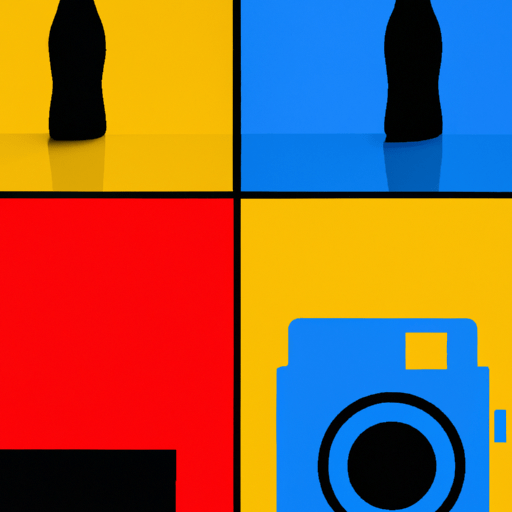
-
Table of Contents
- Unveiling the Power of Negative Space in Design
- The Importance of Negative Space
- Examples of Effective Use of Negative Space
- 1. FedEx Logo
- 2. Apple’s “Think Different” Campaign
- 3. Airbnb’s Belo Logo
- Case Studies: The Impact of Negative Space
- 1. Eye-Tracking Study on Website Design
- 2. Packaging Design Study
- Tips for Harnessing the Power of Negative Space
- Summary
Unveiling the Power of Negative Space in Design

When it comes to design, the use of negative space is often overlooked or underestimated. Negative space, also known as white space, is the area surrounding and between the main elements of a design. It is the empty space that can be found in logos, advertisements, websites, and other visual compositions. While it may seem counterintuitive to focus on what is not there, negative space plays a crucial role in creating visually appealing and effective designs. In this article, we will explore the power of negative space in design and how it can be harnessed to enhance the overall impact of a design.
The Importance of Negative Space
Negative space is not just empty space; it is an essential element of design that can greatly influence the way a message is conveyed. Here are some reasons why negative space is important:
- Enhances readability: Negative space helps to separate and define different elements in a design, making it easier for viewers to understand and navigate the content. By providing breathing room around text and images, negative space improves readability and comprehension.
- Focuses attention: When used strategically, negative space can draw attention to the main subject or message of a design. By surrounding an important element with ample negative space, designers can guide the viewer’s eye and create a focal point.
- Creates balance: Negative space plays a crucial role in achieving visual balance in a design. By carefully distributing positive and negative elements, designers can create a sense of harmony and equilibrium.
- Evokes emotions: Negative space can evoke emotions and create a certain mood or atmosphere in a design. By using negative space to create tension, designers can convey a sense of mystery or intrigue. On the other hand, using negative space to create simplicity and minimalism can evoke a feeling of calmness and tranquility.
Examples of Effective Use of Negative Space
Now that we understand the importance of negative space, let’s explore some real-world examples of its effective use in design:
1. FedEx Logo
The FedEx logo is a classic example of how negative space can be used to create a hidden message. At first glance, the logo appears to be a simple arrangement of the company name in bold purple and orange letters. However, upon closer inspection, one can notice an arrow formed by the negative space between the “E” and the “x.” This hidden arrow symbolizes speed, precision, and forward movement, aligning perfectly with FedEx’s brand values.
2. Apple’s “Think Different” Campaign
Apple’s iconic “Think Different” campaign is another example of the power of negative space. The campaign featured black-and-white portraits of influential figures such as Albert Einstein, Mahatma Gandhi, and Martin Luther King Jr. The negative space surrounding the portraits created a sense of focus and importance, emphasizing the message of individuality and innovation.
3. Airbnb’s Belo Logo
Airbnb’s logo, known as the Belo, is a prime example of how negative space can be used to create a memorable and meaningful design. The logo features a simple, stylized “A” that also resembles a heart, a location pin, and the letter “B.” The clever use of negative space in this logo not only creates multiple visual interpretations but also conveys the brand’s core values of love, travel, and belonging.
Case Studies: The Impact of Negative Space
Several case studies have demonstrated the significant impact of negative space on design effectiveness. Let’s explore a couple of these studies:
1. Eye-Tracking Study on Website Design
In a study conducted by the Nielsen Norman Group, eye-tracking technology was used to analyze how users interacted with different website designs. The study found that designs with ample negative space around important elements, such as headlines and call-to-action buttons, attracted more attention and resulted in higher click-through rates. The negative space helped users quickly identify the key elements and navigate the website more efficiently.
2. Packaging Design Study
In a study published in the Journal of Marketing Research, researchers examined the impact of negative space on consumer perception of product packaging. The study found that packaging designs with appropriate negative space were perceived as more premium and luxurious compared to designs with cluttered layouts. The negative space created a sense of elegance and sophistication, influencing consumers’ perception of the product’s quality.
Tips for Harnessing the Power of Negative Space
Now that we understand the importance and impact of negative space, here are some tips for effectively harnessing its power in design:
- Plan your layout: Before starting a design, carefully plan the layout and consider how negative space can be incorporated to enhance the overall composition.
- Use negative space intentionally: Be intentional with the use of negative space and consider how it can help guide the viewer’s attention and convey the desired message.
- Experiment with different scales: Play with the scale of negative space to create visual interest and emphasize certain elements.
- Consider the medium: Different mediums, such as print and digital, may require different approaches to negative space. Consider how the design will be experienced and adjust accordingly.
- Seek feedback: Get feedback from others to ensure that the negative space is effectively enhancing the design and not causing confusion or distraction.
Summary
Negative space is a powerful tool in design that should not be overlooked. By understanding its importance and harnessing its power, designers can create visually appealing and effective designs that capture attention, convey messages clearly, and evoke emotions. From the hidden arrow in the FedEx logo to the iconic Belo of Airbnb, numerous examples demonstrate the impact of negative space. Through careful planning, intentional use, and experimentation, designers can unlock the full potential of negative space and elevate their designs to new heights.
